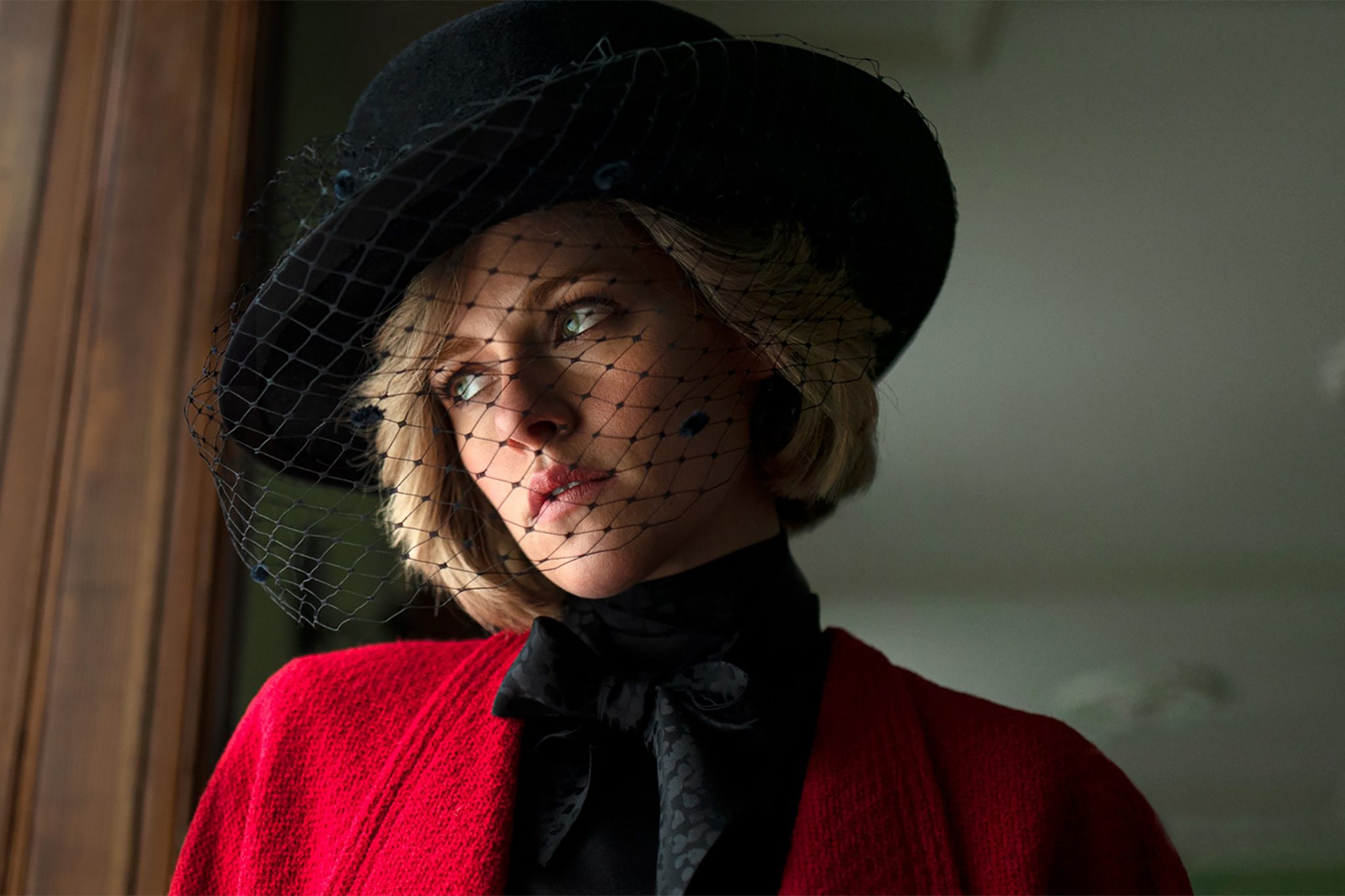It is odd that Pablo Larraín cast an actor as astonishingly naturalistic as Kristen Stewart in this mannered jewel-box of a film
In Pablo Larraín’s eccentric Spencer (2021) – a loopy, hysterical movie about female martyrdom and madness that makes Polanski’s Repulsion (1965) look ambiguous and coy – there is little else as strange as the mismatch of film and star that results from the casting of the louche American actor Kristen Stewart as the mannered, upper-crust Diana Spencer. This is not to say that Stewart, arguably one of the finest actors of her generation, does not do good work in emulating the iconic, famously media-trained princess: the delicate tilting of her ash-blonde head, the doe-like sweeping of her eyes, and the flirtatious, almost babyish softness of her voice are rendered in meticulous and ghostly detail. Perhaps as a consequence of Stewart’s own dealings with fans, handlers and press, she is adept at channelling Diana’s swiftness at cycling between personas, her adroitness at appearing helpless or beseeching in one moment, and mildly seditious in the next. Still, it is odd that Larraín cast such an astonishingly naturalistic actor in this pretty, stifling, sometimes brainless-seeming jewel-box of a film, the movie ultimately doing to Kristen Stewart what it argues the Royal family did to the unravelling woman she portrays – it makes taxidermy of her, swathes her in merciless luxury, and nearly flattens her into a two-dimensional, ethereal figure with a very famous hairstyle.

If Spencer has anything subtle or new to say about the institutions of media and monarchy, it does not find subtle or new ways to convey them. When Diana, running late to Sandringham on Christmas Eve, asks whether “they” are going to kill her, Jonny Greenwood’s soundtrack rises ominously, as if it can hardly wait to underscore the double-entendre. A dead pheasant on the drive up to the house is shown being almost crushed by the pitiless wheels of armoured trucks over and over, the image only a hair’s breadth from the standby of a bird trapped in a cage. (Do not fear: later in the running time, there is a metaphor about taming a wild mare, just in case the expired pheasant did not clue you in sufficiently to our heroine’s plight.) The heavy-handedness of Spencer’s screenplay means that Stewart is often required to speak in high-camp clichés. Her best work is therefore not done with her voice, but with her body and her face. In one scene, Diana stands opposite Charles on either side of a billiards table, the two arguing in genteel, English style, and Stewart elects to do something with her hands – a kind of twisting, stabbing motion at the table’s very edge, as if her fingers were a clutch of cigarettes and she were trying to extinguish them – that is so unusual and so dizzyingly specific that it struck me with more force than the film’s grander, more explicit gestures towards madness. Diana’s bulimic vomiting proves fascinating to Larraín, the motif of the princess slumping queasily at the toilet bowl recurring often enough that the image itself begins to feel like a grim regurgitation; her repeated sightings-or-hallucinations of the ghost of Anne Boleyn, the wife of an unfaithful king who ended up losing her head at the hands of the royals in an extremely literal sense, are goofy in their obviousness.

Spencer is most interesting when it dissolves almost entirely into abstraction, as it does in its last quarter with a montage that finally shows Diana moving freely, sometimes embarrassingly, to a succession of songs that only she hears. Here, Stewart’s natural-seeming spontaneity allows her to convey the qualities the British public seemed to actually treasure in the ‘people’s princess’ – not her frailty or her sadness, but her idiosyncrasy, her charisma, her unsuitability to historic tradition, and above all else her razor-sharp awareness of her image. It works fine, too, when it leans into its own hysteria and begins morphing gleefully into a wild-eyed horror movie, maybe because the existence of a monarchy in Britain seems, to me, horrific in and of itself. Unofficially, the film is something of a sequel to Larraín’s earlier Jackie (2016), which saw Natalie Portman playing the recently-bereaved Jackie Kennedy in similarly heightened fashion. Portman, at the risk of ushering in my cancellation, is for my money a calculated actor, practised and intelligent but ultimately not that real – her characters, as if each of them were a box-fresh costume lying almost flat against her skin, give the impression of being worn by Natalie Portman for a brief spell rather than, as is the case with Stewart in a film like Olivier Assayas’s 2016 supernatural thriller Personal Shopper, seeming to exist entirely on their own. It is a difficult distinction to describe, except to say that it is what makes Portman work so well in Jackie – another loopy, hysterical madness movie about a repressed and deeply mannered woman acting out – where Stewart often seems constrained. It is funny, and extremely Kristen Stewart, that when being interviewed about Spencer, she claimed to only have made five decent movies in her life, and funnier still that even though she was promoting Larraín’s film, she named only the two films she made with Olivier Assayas as her best work. She would not be self-aggrandising or obvious enough to compare her unruly, one-off talent to an untamed mare. Still, I would guess she knows that she is most brilliant under the direction of an auteur who allows her to be truly free.
